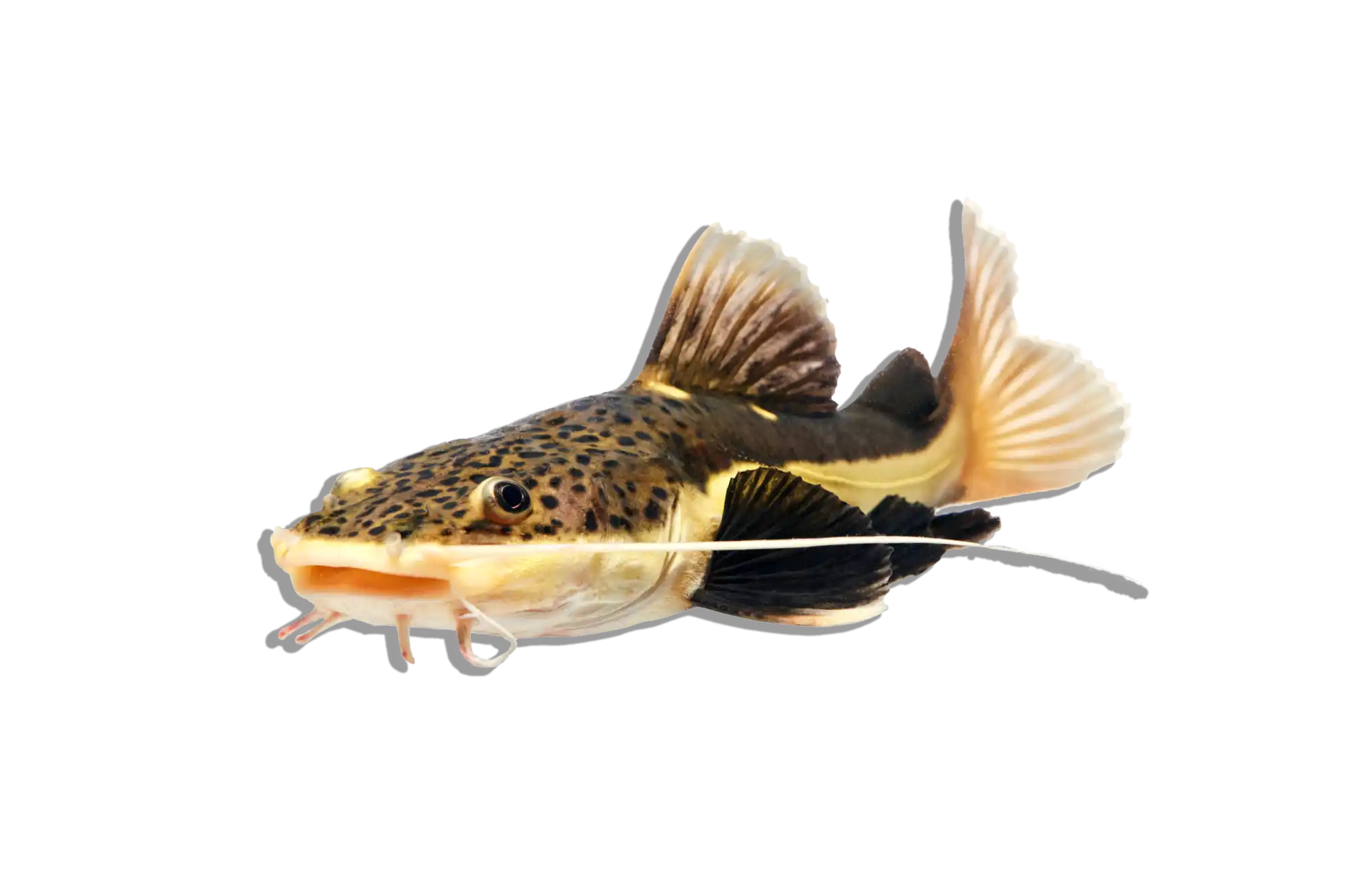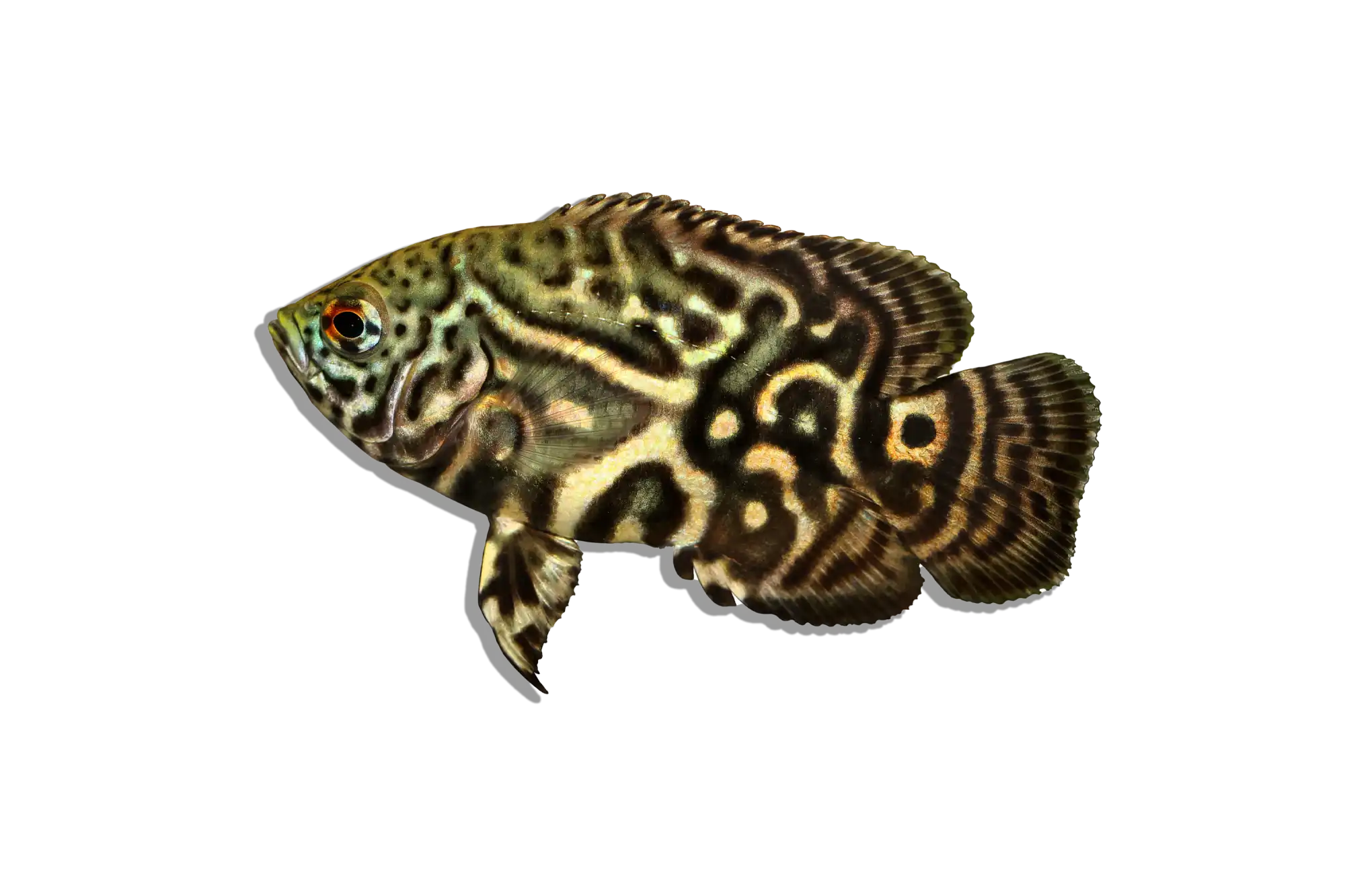Description
Common Name: Congo Puffer
Scientific Name: Tetraodon miurus
Other Names: Miurus Puffer, Potato Puffer, Congo Spotted Puffer
The Congo Puffer is a unique and fascinating freshwater pufferfish known for its stocky, almost "potato-like" appearance and distinctive coloration. This species can vary significantly in color, with individuals displaying shades of brown, gray, or reddish hues, often with spots or mottled patterns. Unlike many other pufferfish, the Congo Puffer spends a lot of time buried in the substrate, lying in wait for prey.
Habitat and Distribution: The Congo Puffer is native to the slow-moving rivers and streams of the Congo River Basin in Central Africa, specifically in countries such as the Democratic Republic of Congo and Angola. These fish inhabit areas with sandy or muddy substrates, where they can easily bury themselves to ambush prey. The water in their natural habitat is typically warm, soft to moderately hard, and slightly acidic to neutral.
Size and Lifespan: In both the wild and captivity, Congo Puffers can grow up to 6 inches (15 cm) in length. Their lifespan can range from 5 to 10 years, depending on the care and conditions provided in the aquarium. Ensuring a proper diet, clean water, and adequate space are crucial for their longevity and well-being.
Diet and Behavior: Congo Puffers are carnivorous and primarily feed on live prey, including fish, crustaceans, and other small aquatic animals in the wild. In an aquarium, their diet should consist of live or frozen foods such as shrimp, earthworms, bloodworms, and small fish. They should also be provided with hard-shelled foods like snails to help wear down their constantly growing teeth. These puffers are ambush predators, often burying themselves in the substrate with only their eyes and mouth exposed, waiting to strike at passing prey. They are solitary and can be highly territorial and aggressive towards other fish.
Breeding and Reproduction: Breeding Congo Puffers in captivity is rare and challenging due to their specific environmental needs and aggressive behavior. Little is documented about their breeding habits in the wild, and successful reproduction typically involves creating conditions that closely mimic their natural habitat. They are egg scatterers, and the male may guard the eggs until they hatch. A separate breeding tank with optimal water conditions and plenty of hiding spots is necessary for any breeding attempts.
Aquarium Care and Tank Requirements: To keep Congo Puffers, a tank of at least 30 gallons is recommended for a single fish. The tank should include a soft, sandy substrate to allow them to burrow and hide. Providing plenty of hiding spots created with rocks, driftwood, and plants will help mimic their natural habitat and reduce stress. Efficient filtration and regular water changes are essential to maintain water quality, as these fish are sensitive to poor conditions. Moderate water flow is suitable to replicate their natural riverine environment.
Ideal Tank Mates: Due to their aggressive and territorial nature, Congo Puffers are best kept alone. If tank mates are desired, they should be carefully chosen and monitored. Suitable tank mates might include fast-moving, non-territorial fish that can avoid the puffer, but even this carries risk. Generally, it is safest to keep Congo Puffers in a species-only setup to prevent potential conflicts and stress.
Difficulty Level: Intermediate to Advanced. While they are hardy and adaptable, their specific dietary needs, aggressive behavior, and requirement for clean, well-maintained water require experienced care and a well-thought-out aquarium setup.
Water Parameters:
- Temperature: 75-82°F (24-28°C)
- pH: 6.5-7.5
- General Hardness (GH): 4-12 dGH
- Carbonate Hardness (KH): 2-6 dKH
- Ammonia: 0 ppm (ideal), up to 0.25 ppm (max)
- Nitrite: 0 ppm (ideal), up to 0.25 ppm (max)
- Nitrate: <20 ppm (ideal), up to 40 ppm (max)
Additional Information:
- The Congo Puffer’s unique ambush hunting behavior and interesting appearance make it a captivating addition to a specialized aquarium.
- These fish have strong, ever-growing teeth that require regular wearing down, so providing hard-shelled prey like snails is essential for their dental health.
- In their natural habitats, Congo Puffers play a role in controlling populations of small aquatic animals, contributing to the ecological balance.
- Fun fact: The Congo Puffer’s ability to bury itself in the substrate not only aids in hunting but also provides a defense mechanism, allowing it to avoid predators and stay hidden.



















